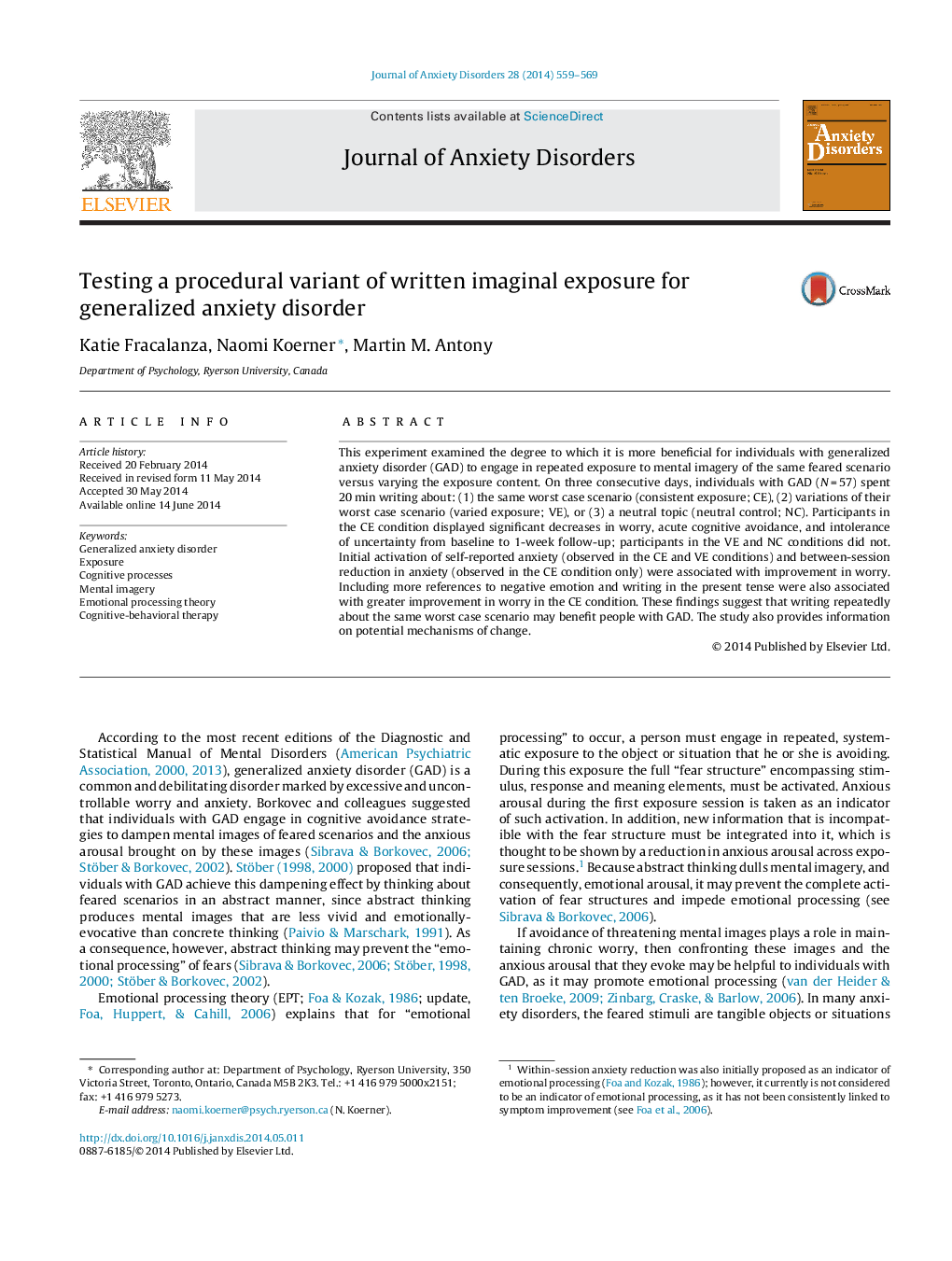| Article ID | Journal | Published Year | Pages | File Type |
|---|---|---|---|---|
| 909320 | Journal of Anxiety Disorders | 2014 | 11 Pages |
•We compared two written exposure procedures for generalized anxiety disorder.•We tested whether emotional processing occurs with exposure.•Consistent exposure to the same feared scenario led to positive outcomes over 1 week.•Varied exposure to different feared scenarios did not lead to change.•Positive outcomes with consistent exposure were linked to emotional processing.
This experiment examined the degree to which it is more beneficial for individuals with generalized anxiety disorder (GAD) to engage in repeated exposure to mental imagery of the same feared scenario versus varying the exposure content. On three consecutive days, individuals with GAD (N = 57) spent 20 min writing about: (1) the same worst case scenario (consistent exposure; CE), (2) variations of their worst case scenario (varied exposure; VE), or (3) a neutral topic (neutral control; NC). Participants in the CE condition displayed significant decreases in worry, acute cognitive avoidance, and intolerance of uncertainty from baseline to 1-week follow-up; participants in the VE and NC conditions did not. Initial activation of self-reported anxiety (observed in the CE and VE conditions) and between-session reduction in anxiety (observed in the CE condition only) were associated with improvement in worry. Including more references to negative emotion and writing in the present tense were also associated with greater improvement in worry in the CE condition. These findings suggest that writing repeatedly about the same worst case scenario may benefit people with GAD. The study also provides information on potential mechanisms of change.
